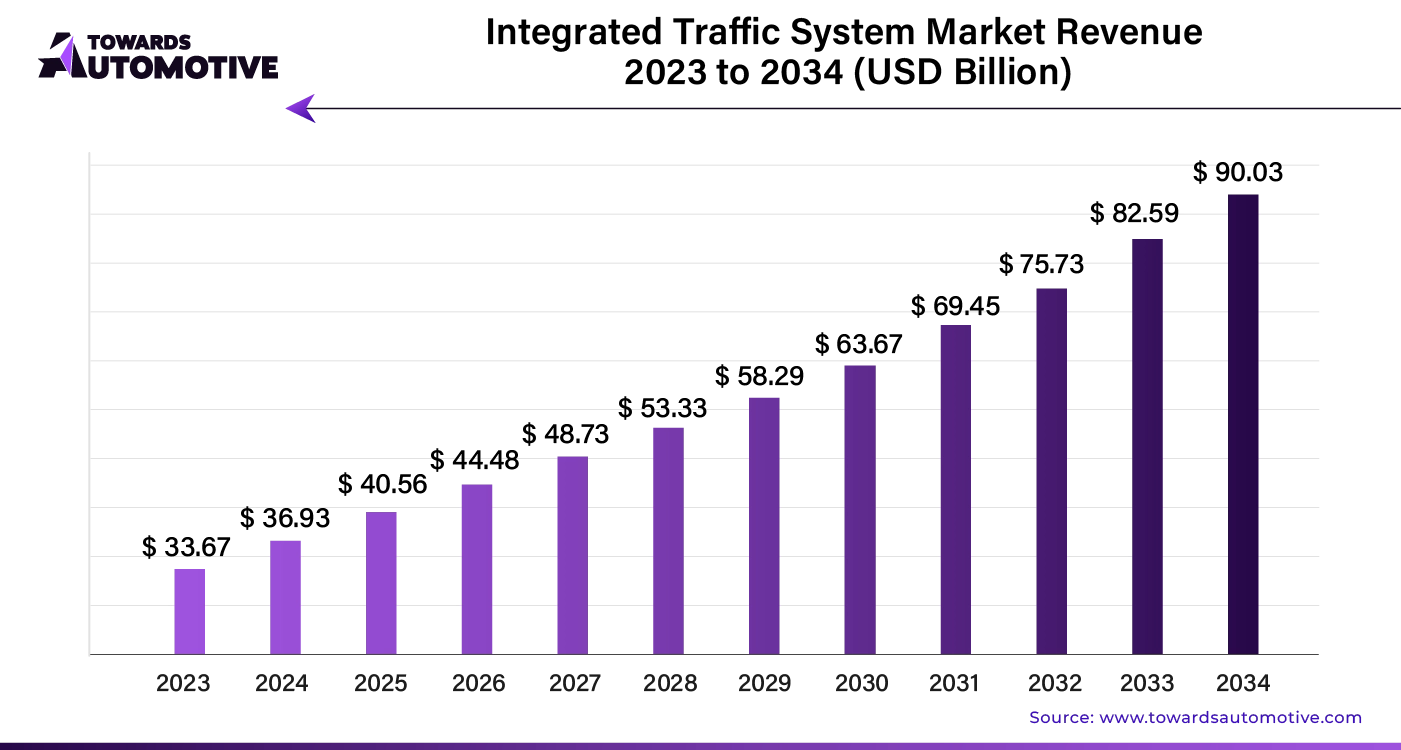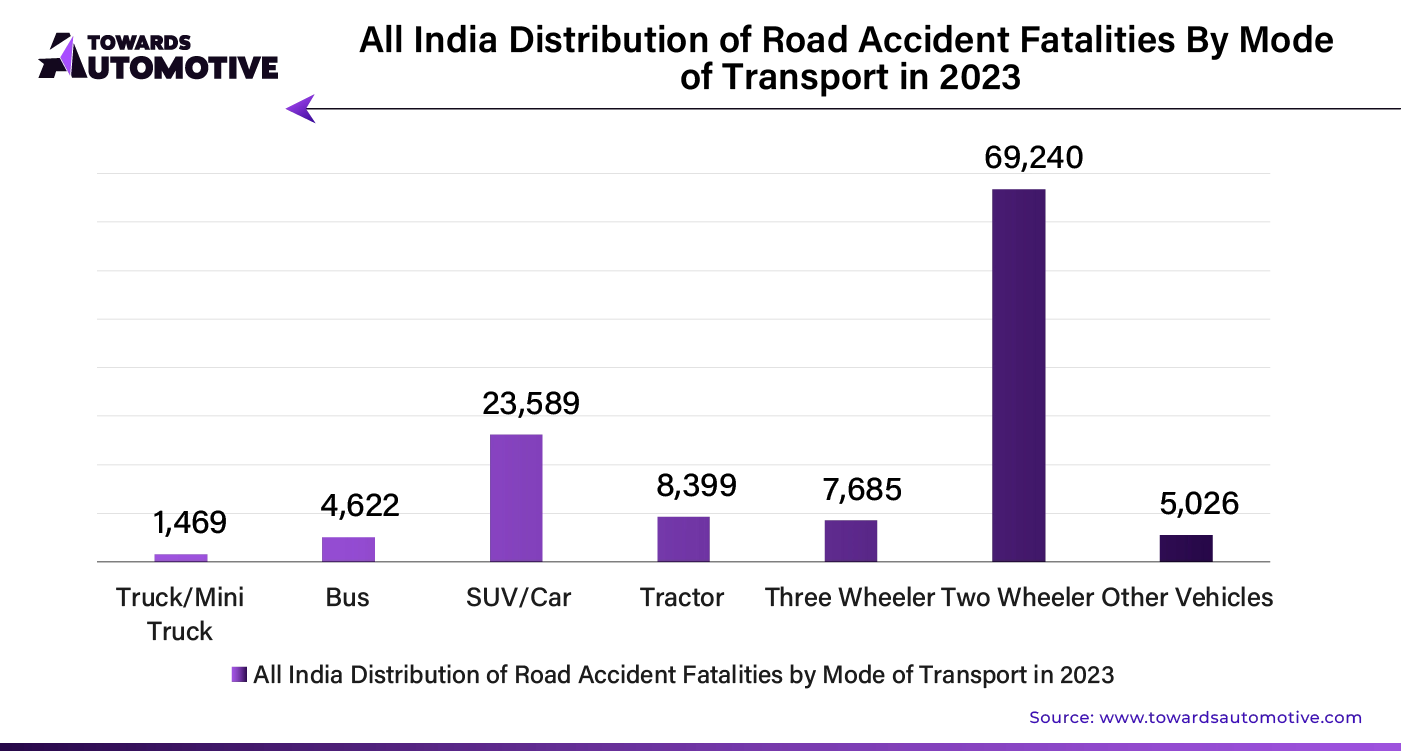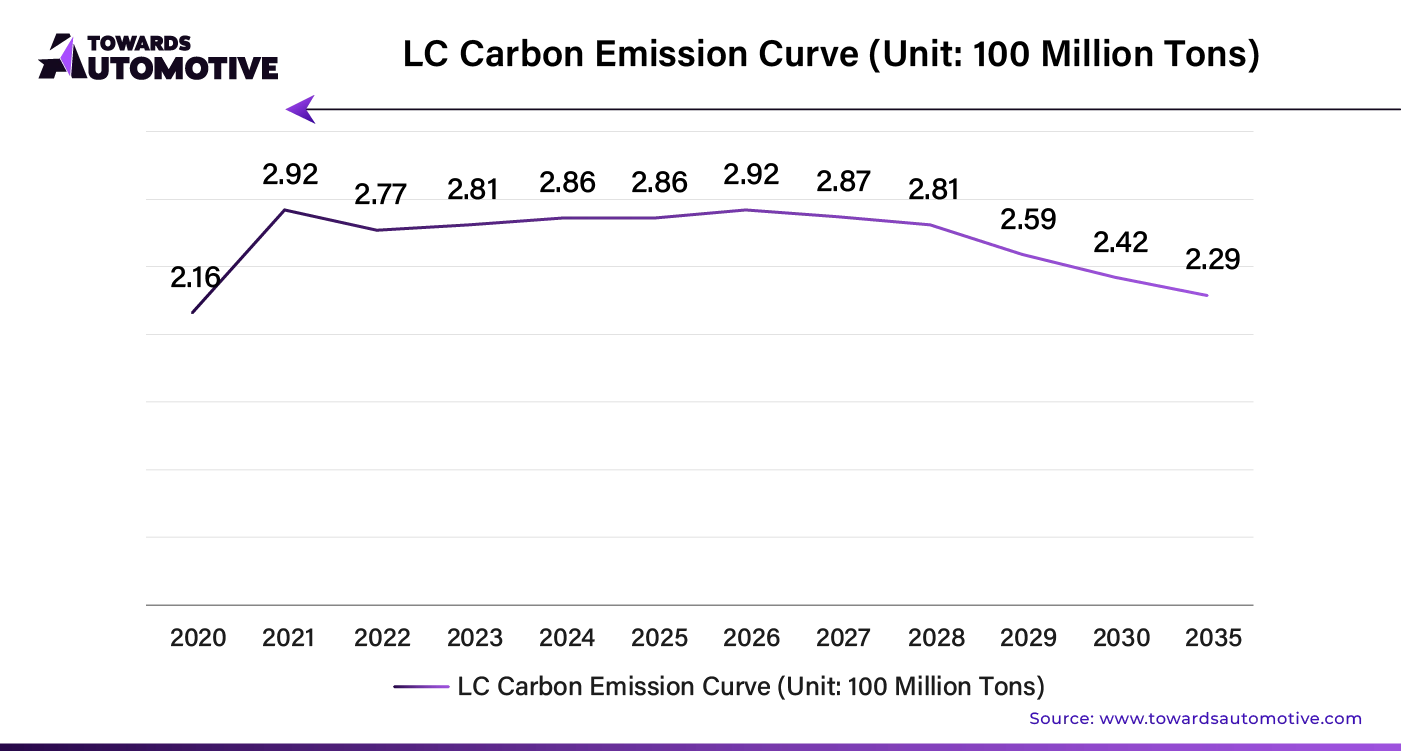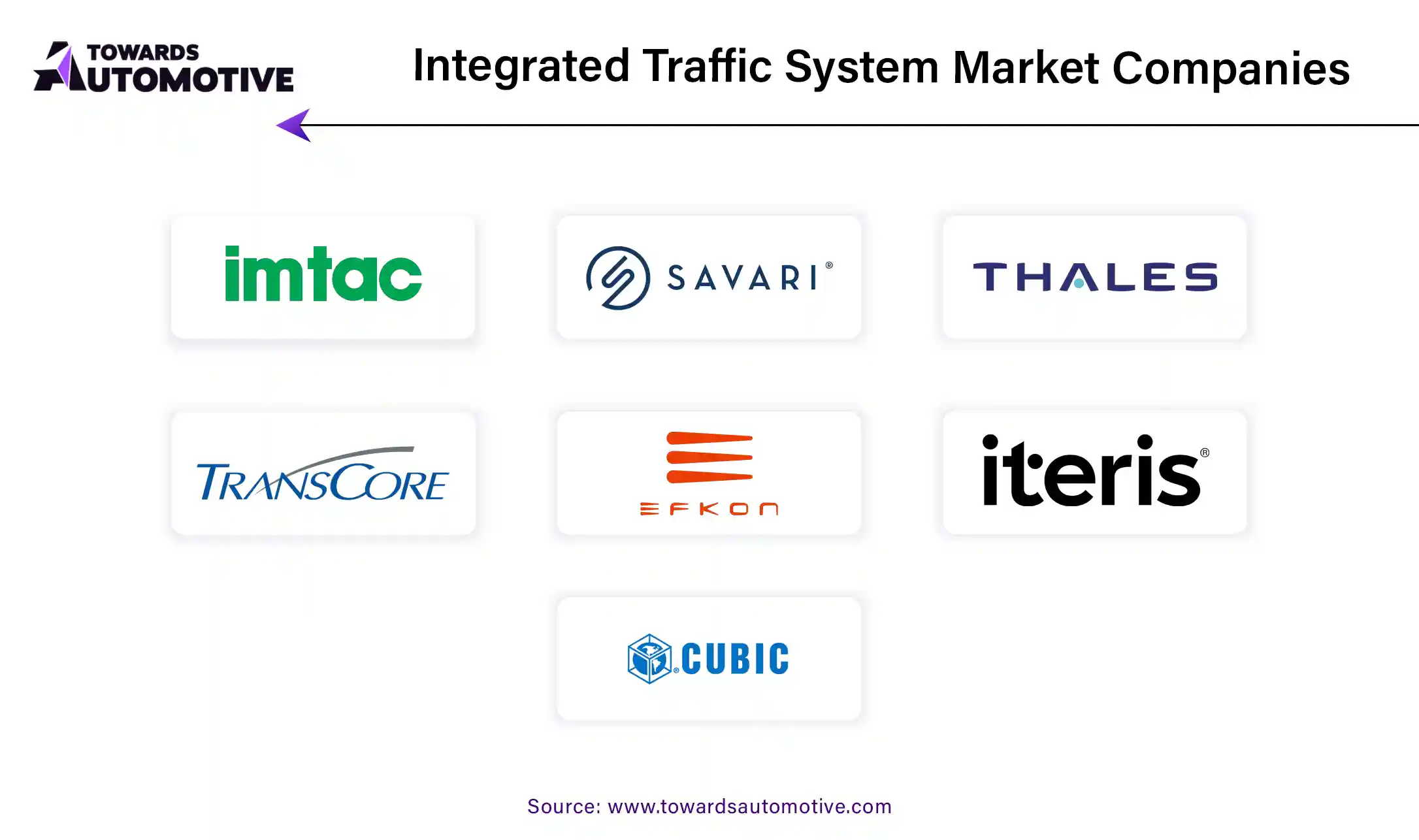April 2025
The integrated traffic system market is set to grow from USD 40.56 billion in 2025 to USD 90.03 billion by 2034, with an expected CAGR of 9.83% over the forecast period from 2025 to 2034.

Unlock Infinite Advantages: Subscribe to Annual Membership
Traffic congestion in urban areas causes productivity losses, higher fuel consumption, and increased air pollution. Integrated traffic systems address these issues by enhancing traffic management, optimizing signals, and improving route planning.
Government regulations and initiatives aimed at road safety, accident reduction, and infrastructure enhancement are accelerating the adoption of these systems. Additionally, the rise of connected and autonomous vehicles offers new opportunities to integrate these technologies into traffic management for safer and more efficient transportation.
Collaborations between governments, private companies, and research institutions are driving innovation and investment in integrated traffic systems, fueling market growth. The automotive market valued at USD 4,070.19 billion in 2023, is experiencing growth and is projected to surpass USD 6,678.28 billion by 2032, with a significant CAGR of over 5.66%.
Technological advancements such as the Internet of Things, artificial intelligence, machine learning, and data analytics are fueling the development of advanced integrated traffic systems that optimize traffic flow, improve safety, and reduce emissions.
Governments and municipalities are heavily investing in smart city initiatives, integrating transportation with other urban systems to boost efficiency, sustainability, and quality of life.
The rising demand for intelligent transportation solutions, which use real-time data, predictive analytics, and automation, is propelling market growth.
Growing environmental concerns and the need to cut carbon emissions are accelerating the adoption of integrated traffic systems that emphasize sustainable transportation options like public transit, cycling, and walking.

Implementing integrated traffic systems often demands significant upfront investment in infrastructure, technology, and software, posing a challenge for municipalities and transportation agencies with tight budgets.
Integrating various components and subsystems can be complex, particularly when dealing with outdated infrastructure and incompatible technologies. These compatibility and interoperability issues can delay implementation.
Resistance from stakeholders, including government bodies, transportation operators, and the public, can hinder adoption. Concerns about privacy, data security, and disruptions to daily routines contribute to this resistance.
The deployment and maintenance of integrated traffic systems require a skilled workforce in IT, data analytics, transportation engineering, and urban planning. A shortage of qualified professionals in these fields can impede system implementation and operation.

AI is set to revolutionize the Integrated Traffic System (ITS) market by enhancing efficiency and responsiveness. By leveraging real-time data analysis, AI can optimize traffic flow, reducing congestion and improving travel times. AI-powered systems can predict traffic patterns and adjust signal timings dynamically, minimizing delays and enhancing overall traffic management.
Machine learning algorithms enable AI to learn from historical data and adapt to changing traffic conditions. This capability allows for more accurate forecasting and proactive management, addressing potential issues before they escalate. Additionally, AI can integrate with other smart city technologies, facilitating seamless communication between vehicles and infrastructure.
The deployment of AI in ITS will also enhance safety through advanced driver assistance systems (ADAS) and automated incident detection. AI can identify and respond to accidents or hazards more quickly than traditional systems, reducing the likelihood of secondary incidents and improving emergency response times.
Overall, AI integration promises to drive significant growth in the ITS market by improving traffic management, safety, and efficiency. As AI technologies evolve, their impact on the ITS sector will become increasingly profound, shaping the future of urban transportation.

In the Integrated Traffic System (ITS) market, the supply chain operates seamlessly to deliver efficient traffic management solutions. The supply chain begins with suppliers of essential components like sensors, cameras, and software systems. These suppliers provide raw materials and technology to manufacturers who assemble and integrate the components into functional ITS solutions.
Manufacturers then distribute these systems to system integrators, who customize and deploy them based on specific traffic management needs. System integrators ensure that all components work cohesively, enhancing traffic flow and reducing congestion. They also collaborate with local governments and agencies to tailor solutions for urban and rural settings.
Logistics companies play a crucial role in transporting these systems from manufacturers to deployment sites. They manage inventory and coordinate delivery schedules to ensure timely installation. Once deployed, ongoing support and maintenance are provided by service teams to address any operational issues and updates.
This coordinated approach ensures that ITS solutions are delivered on time and function effectively, ultimately contributing to smarter, more efficient traffic management.
The Integrated Traffic System (ITS) market thrives through the collaboration of key companies providing essential components. These systems typically include traffic management software, sensors, communication systems, and control centers.
Together, these components form a cohesive ITS ecosystem that enhances traffic efficiency and safety.
United States: Infrastructure Investment Fuels Growth
The U.S. integrated traffic system market is projected to expand at a CAGR of 10.3% from 2024 to 2034. Investments at federal, state, and local levels support infrastructure improvements, including advanced traffic management systems. Many cities are adopting smart city initiatives to enhance urban infrastructure, with integrated traffic systems playing a crucial role.
United Kingdom: Technological Advancements Drive Innovation
In the United Kingdom, the integrated traffic system market is expected to grow at a CAGR of 11.2% through 2034. Technological advancements such as IoT, AI, machine learning, and data analytics are revolutionizing traffic management, improving efficiency, and reducing congestion. Real-time incident detection and adaptive signal control enhance road safety across the country.
China: Data-Driven Traffic Management
China's market is forecasted to grow at a CAGR of 10.8% from 2024 to 2034. The use of big data analytics and real-time traffic data optimizes traffic flow and improves transportation efficiency. Public-private partnerships drive innovation and funding for integrated traffic systems, addressing the transportation needs of Chinese cities.
Japan: Public Transportation Integration
Japan's integrated traffic system market is set to expand at a CAGR of 11.6% through 2034. The country focuses on integrating public transportation with road traffic management, offering efficient multi-modal solutions. The systems also enhance safety and disaster management, including real-time incident detection and emergency response coordination.
Korea: Smart Infrastructure Drives Market Growth
Korea's market is expected to grow at a CAGR of 12.3% through 2034, driven by investments in smart infrastructure. Integrated traffic systems are key to modernizing transportation networks and improving road safety. Korea's emphasis on reducing traffic accidents and enhancing visibility supports the growth of integrated traffic solutions.
The traffic monitoring segment is projected to lead the integrated traffic system market, with an anticipated CAGR of 9.5% through 2034. This growth is fueled by advancements in technology, such as sensors, cameras, IoT devices, and data analytics, which enable the development of advanced traffic monitoring solutions. These technologies offer real-time insights into traffic flow, congestion, and incidents, allowing authorities to make well-informed decisions and enhance road safety.
Similarly, the display boards segment is expected to see substantial growth, with a CAGR of 9.3% through 2034. Display boards are essential for delivering real-time traffic information, road conditions, and alerts to drivers, pedestrians, and cyclists. They are vital components of traffic management systems, providing visual cues, instructions, and warnings to regulate traffic flow and ensure safe navigation through roads and construction zones.
The integrated traffic system market features several key players offering diverse solutions to optimize traffic flow, enhance road safety, and boost transportation efficiency.
Cubic Corporation provides intelligent transportation systems, including fare collection, traffic management, and real-time passenger information systems. Their traffic management solutions use data analytics and predictive modeling to streamline traffic flow and increase efficiency.
Iteris focuses on traffic management and analytics, offering intersection control systems, traffic sensors, and predictive modeling platforms. Their solutions help transportation agencies improve traffic flow, safety, and mobility in both urban and highway settings.

By Function
By Hardware Type
By Sensors
By Application
By Region
April 2025
April 2025
April 2025
April 2025
Dr. Arjun Patel is a distinguished expert in the automotive industry, holding advanced degrees in Automotive Engineering and Mechanical Engineering. His expertise spans automotive market dynamics, technological advancements, and sustainable practices. Dr. Patel excels in conducting in depth research and analysis on market trends, consumer preferences, and the economic implications within the automotive sector. He is renowned for his insightful publications on topics such as electric vehicles, autonomous driving technologies, and the evolution of sustainable transportation solutions. Dr. Patels research contributions have significantly advanced understanding in the field, earning him recognition as a leading authority in automotive research and analysis.
We offer automotive expertise for market projections and customizable research, adaptable to diverse strategic approaches.
Contact Us